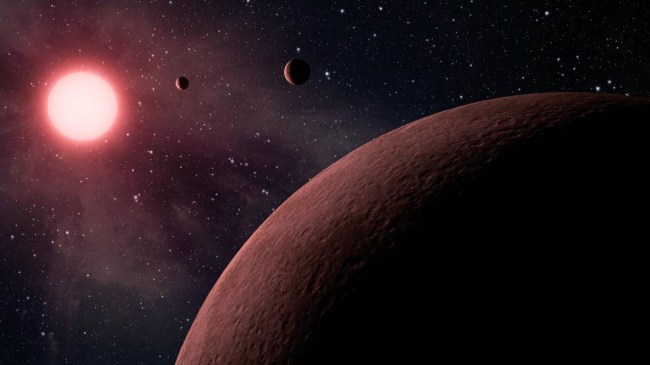NASA’s Kepler space telescope has made an extraordinary discovery of 219 exoplanets, including 10 that are Earth-like that just may support life. The ten special planets are believed to be rocky and close to the size of Earth, plus they are within the habitable zone of the stars they orbit. All of those factors equate that the ten planets could have liquid water on their surface, meaning that they could be support life.
“The Kepler data set is unique, as it is the only one containing a population of these near Earth-analogs – planets with roughly the same size and orbit as Earth,” said Mario Perez, Kepler program scientist in the Astrophysics Division of NASA’s Science Mission Directorate. “Understanding their frequency in the galaxy will help inform the design of future NASA missions to directly image another Earth.”
In the group of newly found planets, the one of most interest is KOI-7711 (Kepler Object of Interest), which could be a close cousin to Earth based on its size and distance to its sun-like star.
With the latest discovery of 219 exoplanets, the Kepler mission has now identified 4,034 planet candidates. NASA had another big find of a batch of exoplanets in July of 2016, where nine planets were found in the “Goldilocks zones,” meaning the distance from its star is just right, not too hot and not too cold to sustain life. However, before we get too excited we must remember that our own solar system features three planets in the habitable zone of the sun: Mars, Venus, and Earth, but you would want to live on only one of those.
Kepler works by locking in on a star and whenever a planet passes in front of it, the orbiting celestial body blocks some of its light. The dimming of the star’s light gives Kepler an idea of how big it is and how far it is to the star. These calculations can’t give much more information than size and orbit, so we must wait for the next generation of telescopes to give more conclusive data if these planets are actually habitable or not.
Kepler launched on March 7, 2009, but the space telescope’s end is near. NASA is currently working on the Transiting Exoplanet Survey Satellite (TESS) to continue their exoplanet-hunting mission, which they hope to launch in 2018. It will be capable of studying filtered starlight to provide more information about the atmosphere of planets.
